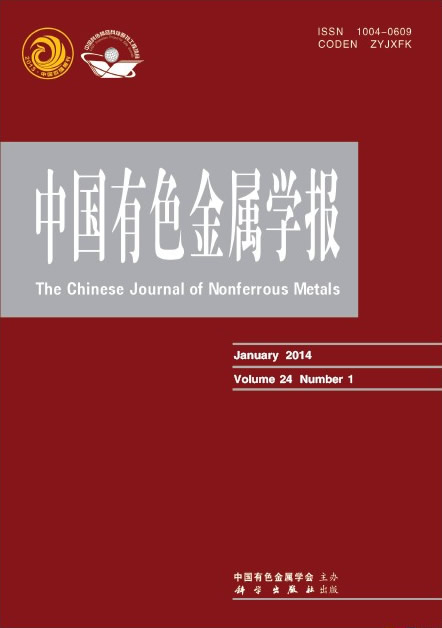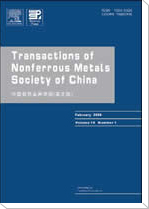(北京有色金属研究总院, 北京100088)
摘 要: 在Geeble−1500热模拟机上对7055铝合金进行热压缩试验,基于热压缩试验数据,建立流变应力的反向传播(BP)神经网络预测模型和加工图。结果表明:用人工神经网络能更精确地预测热压缩过程中的流变应力,预测精度明显高于线性经验公式的;通过预测模型可以获得样本数据值范围内的非样本数据变形条件下的流变应力,其预测结果充分反映该合金的高温变形特征;在本实验条件下,7055铝合金在高温变形时存在一个失稳区,即变形温度在实验温度范围内应变速率为0.025 s−1以上的区域;在375~425 ℃的范围内,应变速率小于0.001 s−1的区域,最大功率耗散系数为0.45;EBSD技术分析表明在安全区发生部分动态再结晶。利用加工图确定了热变形时的流变失稳区, 并且获得了试验参数范围内热变形的最佳工艺参数, 其热加工温度为350−430 ℃低应变速率区。
关键字: 7055铝合金;流变应力;热变形;神经网络;加工图
7055 aluminum alloy based on artificial neural networks
(General Research Institute for Nonferrous Metals, Beijing 100088, China)
Abstract:The isothermal compression of 7055 alloy was carried out at a Geeble-1500D simulator. According to the experimental results, a back-propagation (BP) neural network model of flow stress and a processing map were developed. The results indicate that the neural network can correctly reproduce the flow stress in the sampled data and it can also predict well the non-sampled data. The predicted curves can accurately reflect the flow behavior of 7055 alloy during the hot deformation. The processing map shows unsteady zones of high temperature deformation of 7055 alloy, including the zone under experimental temperatures and above strain rate of 0.025 s−1. At 375−425 ℃ and 0.001 s−1, the peak efficiency of power dissipation is 0.45. Electron backscatter diffraction (EBSD) observations show that there is dynamic recrystallization in the steady zones. The temperature of 350−430 ℃ and low strain rate are recommended to set the industrial forming conditions.
Key words: 7055 Al alloy; flow stress; hot deformation; artificial neural network; processing map


